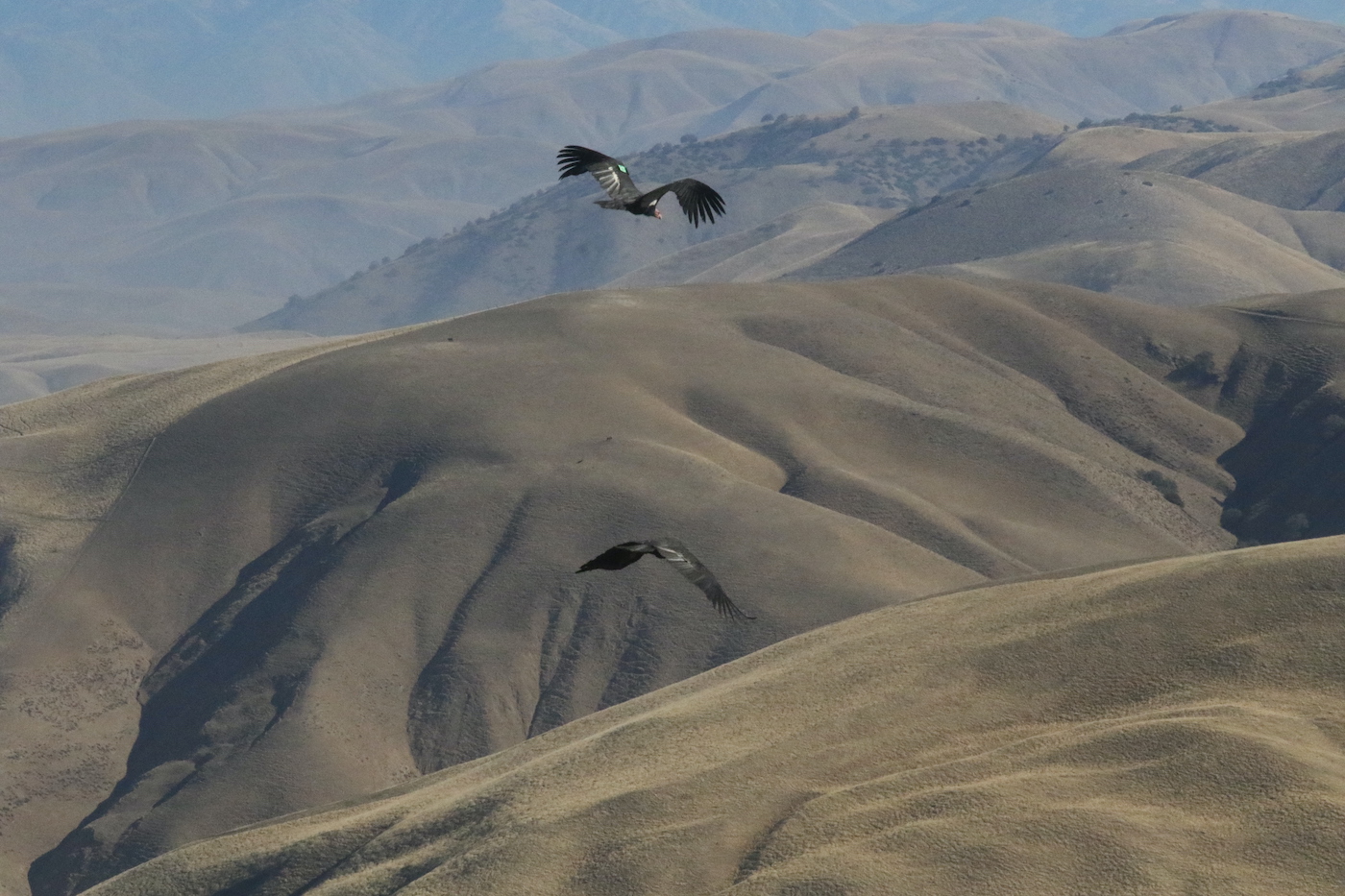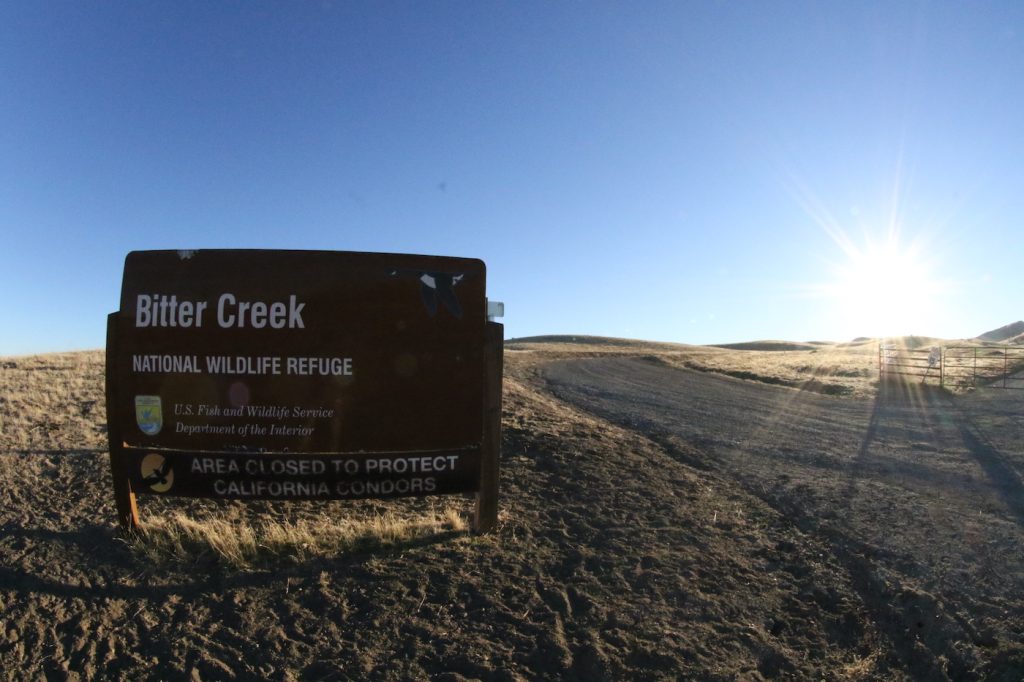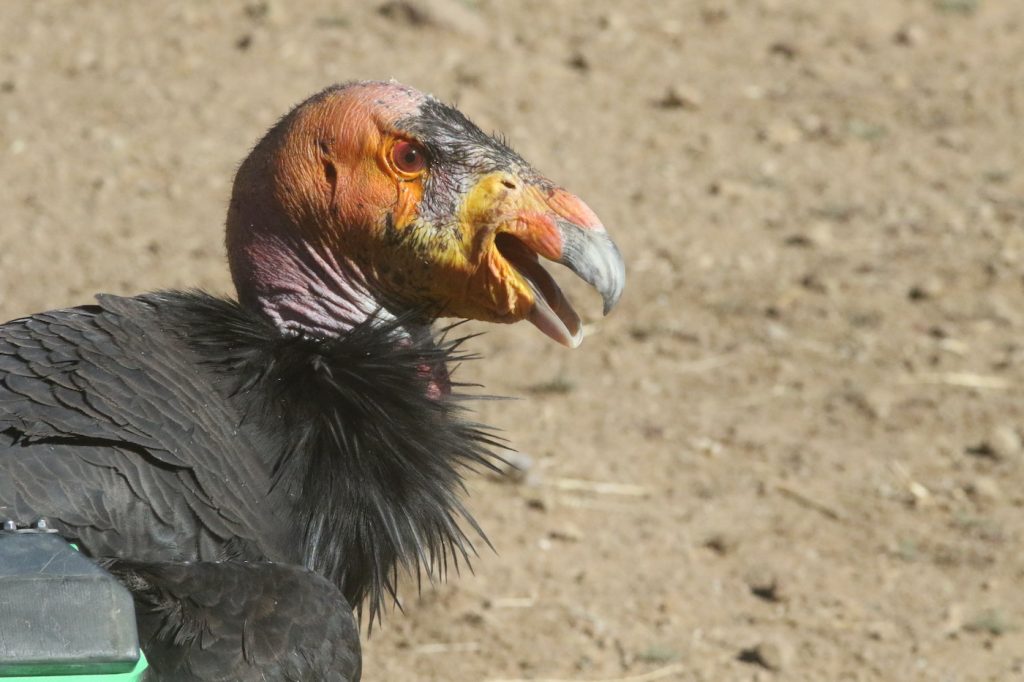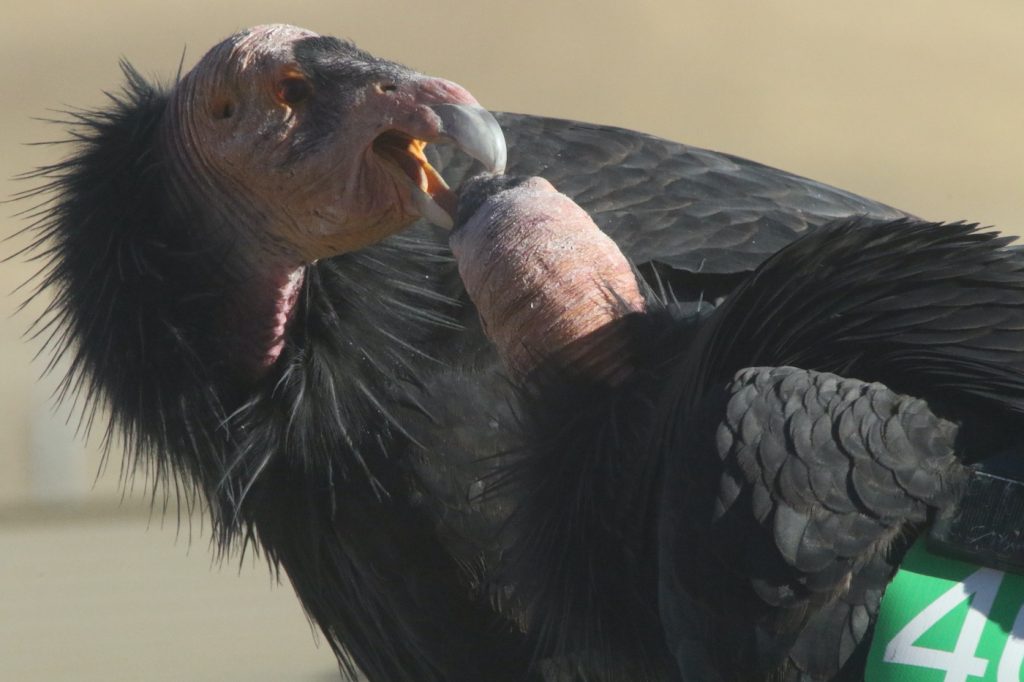First Encounter

I chose a broad sandstone stage, dropped my camera pack, and kicked back on the gritty slab in the Sierra Madre Mountains of the Los Padres National Forest. It was the spring of 1997, and the sun was shining overhead with intermittent puffy clouds drifting north to south. My hands were behind my head and my eyes were closed. Occasionally clouds would block out the sun — or maybe it was a condor. After several shadows passed overhead, I looked up and saw a condor circling above me. It was looking at me. Potential prey or just simple curiosity? I sat up and marveled at its wingspan, its velvety black feathers shimmering in the midday sun, and its ability to cover ground like no other land bird in North America.
Before I knew it, the condor had soared off, disappearing over the next ridge. I was thrilled. It was a backcountry moment I’ve never forgotten. Seeing an Old World vulture that was staring at extinction, was now gazing back at me. It was inspiring. That steely gaze made me want more experiences in wild places with endangered wildlife, something I’ve sought ever since.
Bitter Creek National Wildlife Refuge

Through my binoculars and about a half mile away, there was no mistaking its pumpkin-colored head. A solitary California condor soared majestically over the Bitter Creek National Wildlife Refuge. It circled above in broad, sweeping arcs before it vanished into a narrow canyon cloaked in dense chaparral. As large as condors are with their nine-foot plus wingspans outstretched, they can suddenly vanish in a blink.
This was the first of nine condors that were “worked up” and released on a recent crisp fall day in the refuge. A couple times each year, condors are trapped by biologists and given health checks at various release sites in California. While photographing these iconic raptors, remnants of the Pleistocene Epoch, I got to observe all the hard work and preparation by biologists to keep these birds safe while expanding their range.
North America’s largest flying land birds are always battling habitat loss, and especially poisoning from lead bullets, where condors are susceptible after locating gut piles left by hunters in the backcountry. Lead gets into their bloodstream, and affects their crop, which doesn’t allow them to digest properly. Eventually, condors that suffer from lead poisoning experience a slow death if they aren’t found and treated by biologists.
However, through tireless efforts by biologists from the U.S. Fish and Wildlife Service, and release sites up and down the West Coast, there are now almost 470 condors flying free throughout their historic habitat with 170 of those in California. Although, over the years, since releasing condors began in 1992, there’s been a throng of obstacles facing the condor’s survival. Besides lead, there’s been an increase in wildfires, trash consumption, and encounters with humans in varying degrees. Condors average about 150 miles per day in the air, so there’s always a threat of collisions with powerlines, vehicles, and the unknown.
Backcountry Triage
There were two stations with three to five biologists working each station. There were 13 condors in the flight pen waiting to be “worked up” and then released into the narrow canyons surrounding Bitter Creek. The refuge is located between the Sespe Wilderness and the Carrizo Plain National Monument. Over the last several years, the refuge has become a vital launching pad for releasing condors into the wild.

A California Condor at the Bitter Creek National Wildlife Refuge 
California Condors are trapped twice a year to get wellness checks by biologists
A “work up” involves biologists wrangling condors one at a time inside the flight pen. Once a condor is secured, a biologist will get ahold of its legs. Another biologist wraps an arm around its wing while holding the bird’s body against their chest. The other hand will be placed around the condor’s beak, not allowing the bird to extend its neck where condor’s draw a lot of their power from while pulling flesh away from a carcass. Another biologist draws blood to check for lead levels. Each condor is administered a numbered tag and a GPS unit to keep track of each condor’s whereabouts as they soar in swirling thermal updrafts across their range. The other biologist gathers all the data for each condor on an iPad.
I placed myself behind a pile of sandstone boulders as a biologist carried out a condor after its “work up.” The biologist was about to let the condor loose. Watching a condor take flight and immediately soar has always been impressive, but this one nearly took my head off as it flew just inches over my head. I felt a swift swoosh as the raptor flew over, momentarily blocking out the sun. I spun around tracking its route where it disappeared into a narrow draw, joining its comrades hidden in the backcountry wilds of Bitter Creek.







